Top 10 attractions in Vietnam
08.05.2019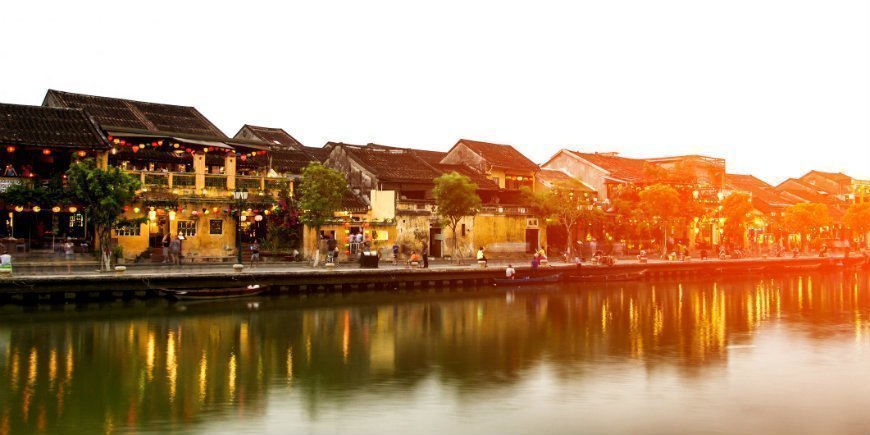
Vietnam is a wonderful travel destination offering lots of fascinating attractions
Explore, for example, ancient Hindu ruins which lie hidden away between scenic mountains, go on a cruise between limestone cliffs in the emerald-green waters of Ha Long Bay or explore an isolated tropical island at Phu Quoc.
Read more about ten exciting sights you can experience on your tour to Vietnam below.
Sail in the scenic Ha Long Bay
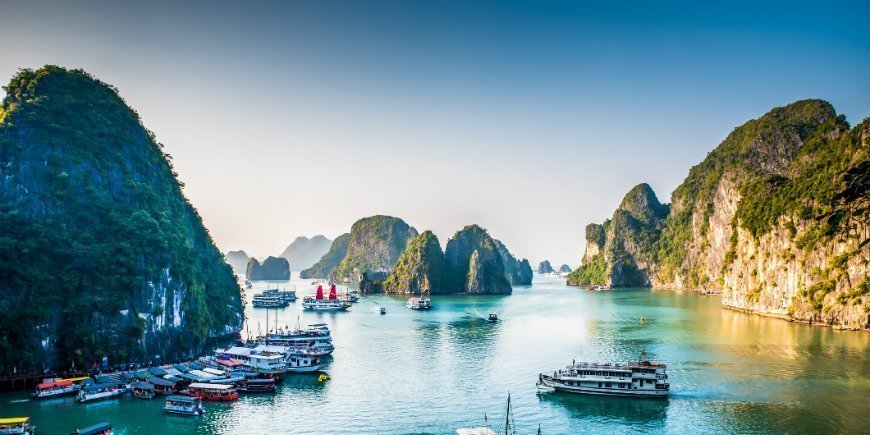
In Ha Long Bay, you will experience a fantastic landscape as you sail on the emerald green water, where limestone cliffs, scattered throughout the bay, tower vertically. There are more than 1,600 islands and islets throughout the bay.
In 1994, Ha Long Bay was listed as a UNESCO World Heritage Site due to its distinctive and unspoiled nature. The perfect way to experience the bay is to go on a cruise. Sail through the beautiful landscape and enjoy fantastic views of the islands. On the cruise, you will also experience some of the more remote islands in the bay. Some boats lend out kayaks, allowing you to explore the hidden caves and nature of the bay close up. You can also go for a dip in the emerald-green water or simply enjoy the view of the stunning scenery.
The cruise also takes you past small floating fishing villages, where the residents have adapted to the bay’s conditions for thousands of years. However, life in the fishing villages has changed significantly after a legislative change forced the residents to move to the mainland to ensure that the children were better educated while preventing the pollution of Ha Long Bay.
Old town and colourful lanterns in Hoi An
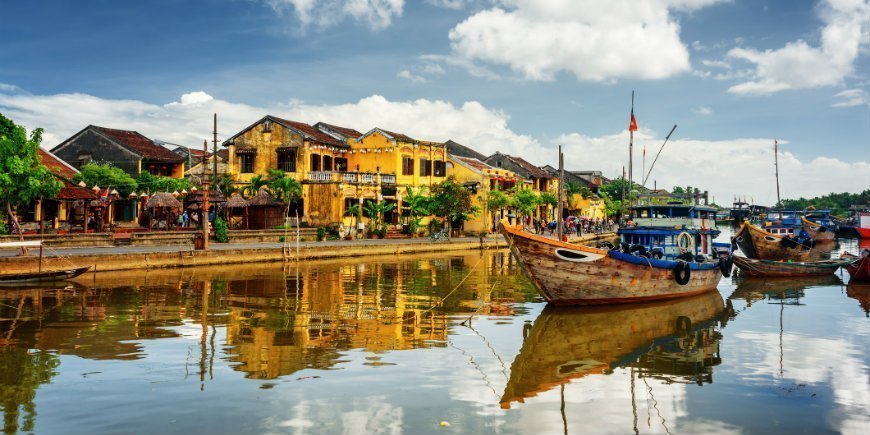
The Vietnam of old can really be felt in Hoi An’s old town, which is an incredibly well-preserved old trading town.
The old town was South East Asia’s trading centre from the 15th to the 17th century, to which merchants from several continents travelled. Over time, the many travellers have influenced the architecture of the district, which you can still see today. There are about 800 well-preserved buildings, and you can visit 28 of them.
In the old town, you will find Chinese temples, French colonial buildings and numerous quaint little streets.
One of the neighbourhood’s popular attractions is the Japanese Bridge, which is one of Vietnam’s landmarks. Built in Japanese style, the bridge was constructed in the 18th century and was built to allow Japanese residents of Hoi An to cross the river into the district’s Chinese neighbourhood.
The Thu Bon River flows through the Hoi An’s old town, which is the perfect place to be in the evening. A magical atmosphere is created when the lanterns illuminate the city and are reflected in the water.
There are many cosy little restaurants along the river where you can taste delicious, traditional Vietnamese dishes or learn how to make Vietnamese food. There are also small markets near the river where fishermen sell their catch in the early hours of the morning.
Sail between coconut trees in the Mekong Delta
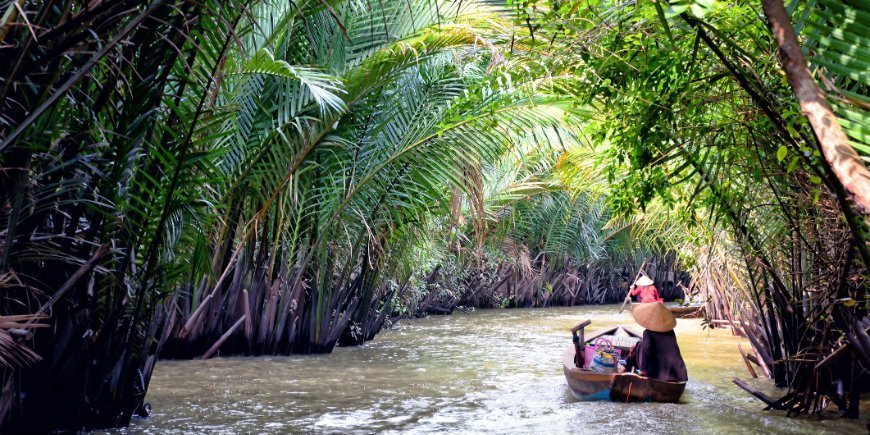
In southern Vietnam is the Mekong Delta, a nature area covering 40,000 m2. The delta consists of many small rivers and streams that intersect to form a huge maze.
The Mekong Delta is created by the Mekong River, which extends 4,500 kilometres and flows through no fewer than six countries. The delta provides a breeding ground for the diverse nature area and agriculture. There is therefore extensive rice production around the Mekong Delta, which has earned it the nickname “the rice bowl of Vietnam”.
When you explore the delta, you sail along small streams and rivers, which create passages between the green coconut trees that can grow in the delta water. Along the way, you may find locals selling goods such as watermelons, coconuts and pineapples from their boat.
Although the delta environment is very different to what we are used to in the UK, people do actually live there. On your boat trip in the delta, you will pass small local villages, where you might, for example, see a family using leaves from coconut palms to make a roof for their house, and you can even see a rice paper factory.
The underground Cu Chi tunnels
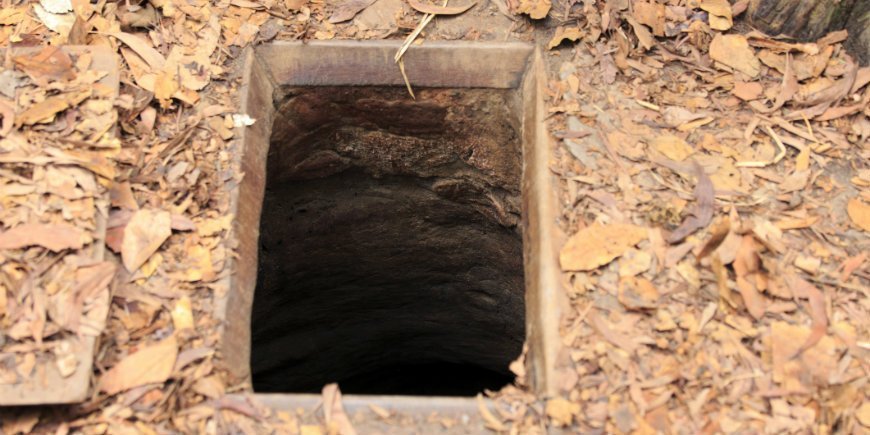
At the Cu Chi tunnels, not far from Ho Chi Minh City, you will see an underground network of tunnels, and almost an underground city, where the Viet Cong lived when Vietnam was at war with the Americans in the 1960s.
The Cu Chi tunnels are a 120 km network of underground tunnels that had everything the Viet Cong needed during the war, including hospitals, kitchens and command centres.
Some of the tunnels are very narrow and only intended for small people to crawl through them. However, you can still see the underground passages in the tunnels, as some of them have been made a little bigger and reinforced with cement.
At the Cu Chi tunnels, you can walk in a 100-metre-long tunnel, located 7 metres underground. You crawl through the narrow tunnel where the Viet Cong hid during the war. The tunnel is lit in some places, and elsewhere it is quite black, so you experience what it was like for the soldiers to be down there.
Outside the tunnels, you can see the tiny fox holes in the forest floor that the Vietnamese soldiers escaped into during the war. The holes are so narrow that most adults can’t even crawl down there today.
Rice fields, mountains and culture in Sapa
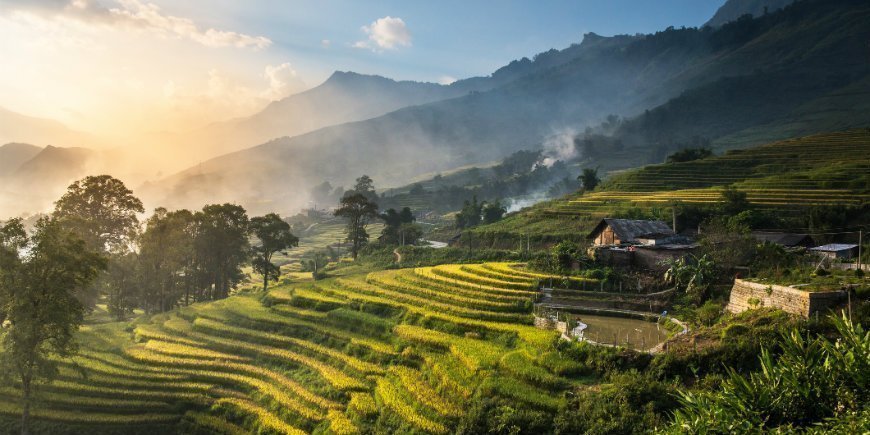
Located at an altitude of around 1,500 metres in northern Vietnam, Sapa boasts some of Vietnam’s most magnificent scenery. Surrounded by the Hoang Lien Son mountains in the hilly mountain landscape lies Sapa, and several of the mountains are covered by scenic green rice terraces.
Sapa’s amazing nature is what makes the area one of the best places to trek in Vietnam. Trek, for example, from the village of Take Van to Lao Chai, where the Hmong live. Around one million people in Vietnam belong to the Hmong ethnic group. The Hmong in Vietnam primarily live in the mountains along the northern border. The are several groups among the Hmong people, and you can tell them apart by their different coloured clothing.
On the hike, you will pass the amazing rice fields and scenic mountains that characterise the nature, and you will also experience the local life in Sapa. You will, for example, see farmers ploughing the fields with their bulls or picking rice as you trek up the mountain slopes.
In addition to the Hmong people, other ethnic minorities also live in Sapa, including the Yao, Zay and Ha Pho groups. Each ethnic group has its own traditions, clothing style and customs, and Sapa is the most culturally diverse area in Vietnam. The different cultures are spread all over the Sapa area, but many people travel to Sapa town to sell their rice, corn or crafts.
Markets in Vietnam
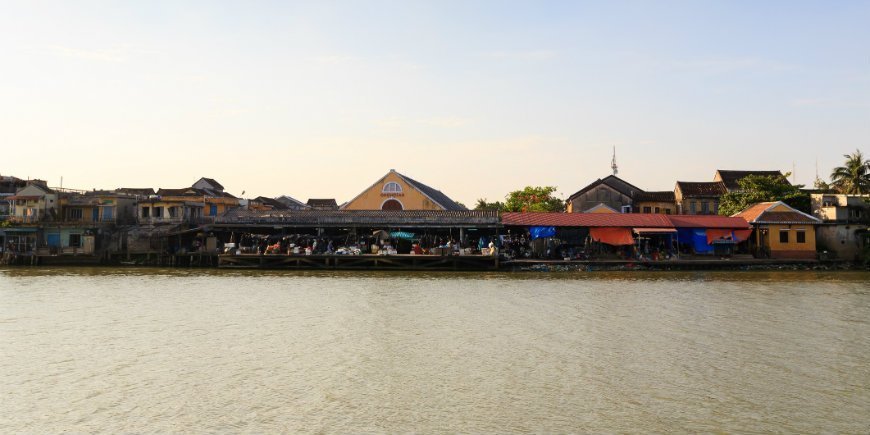
In Asia, you will find a lot of exciting local markets, and Vietnam is no exception. At the Vietnamese markets, you can buy everything from freshly caught fish to beautiful silk scarves.
A market well worth a visit is Hoi An Central Market, located on the banks of the Thu Bon River. The market starts in the early hours of the morning, when you can buy freshly caught fish from local fishermen. At the market, you will also find delicious spices and herbs used in Vietnamese cuisine,
as well as all manner of brightly coloured Vietnamese silk. In fact, tailors have a whole section for themselves in the market where you can buy some of the cheapest tailor-made clothes in Vietnam. If you would like to buy something, be aware that many of the goods are overpriced, so this is a good opportunity to test your haggling skills.
Every weekend, you can also head to the busy Hanoi Weekend Night Market, where you can buy souvenirs and delicious food at the many stalls. The market is incredibly vibrant, and you gain an insight into Vietnamese life in the capital. On the street, musicians play Vietnamese music dressed in traditional costume.
Around the market, the historic buildings are lit up, allowing you to do a little sightseeing on your walk around the market.
You can buy something delicious for dinner from one of the market’s many food stalls. Try, for example, Bún Chả, which originates from Hanoi.
Relax on Phu Quoc’s white sandy beaches
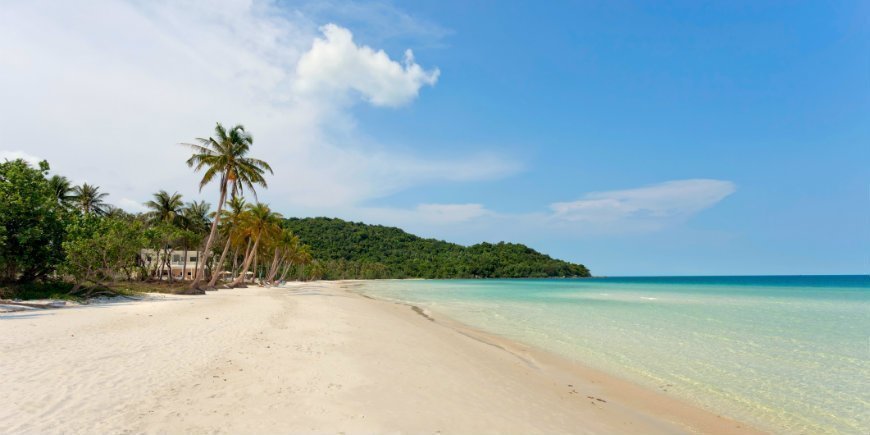
On the tropical island of Phu Quoc, you will find miles of coastline with sandy beaches and swaying palm trees. The island is located in the Phu Quoc district, which consists of 28 small islands, of which Phu Quoc is the largest.
There is fantastic marine life around the island, where you can experience some 135 different species of colourful coral fish. If you are lucky, you might even see the green sea turtle or the hawksbill sea turtle.
From Phu Quoc, you can go on small day excursions to some of the other islands in the Phu Quoc district. You can, for example, visit Hon Xuang, which is said to be the most beautiful island in the area. There are no resorts on the island, making it seem more isolated and earning it the nickname Robinson Crusoe Island.
Phu Quoc also offers incredible nature experiences. Half of the island’s area is a protected national park and a UNESCO World Heritage Site. If you wish to experience the park, visit the Khu Rung Nguyen Sinh Forest Reserve from the village of Ganh Dau. In the park, you will see the beautiful birds, not to mention monkeys and otters if you’re lucky.
My Son Sanctuary in Hoi An
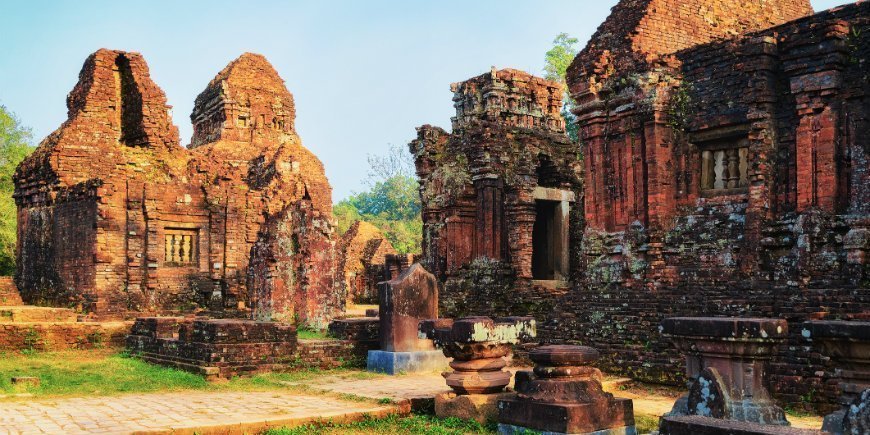
Around 40 kilometres outside Hoi An is My Son Sanctuary, an area housing ruins of historic Hindu temples. The temples were built between the 4th and 13th centuries for religious ceremonies for the Cham dynasty, but they have also been used as a burial ground for the dynasty’s royalty.
The first temples were built of wood and erected in honour of the Indian god Shiva, but unfortunately burned down in the 6th century. However, many temples were rebuilt and there would have been up to 70 of them in the area.
Shortly after the last temples were built in the 13th century, the area was abandoned again and lay forgotten until 1898, when My Son Sanctuary was rediscovered by a Frenchman.
Today, the temple ruins lie between beautiful mountains and spread over an area that is two kilometres wide. On your tour, you will discover many beautiful and impressive ruins, which have been partially engulfed by nature.
Discover the royal citadel in Hue
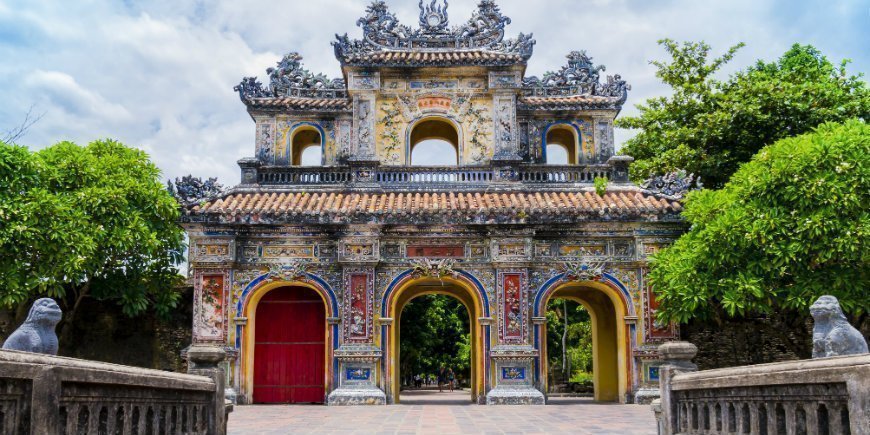
By the Huong River – or the Perfume River as it is also known – is one of Vietnam’s UNESCO-preserved areas – the Citadel in Hue. From 1802 to 1945, Hue was Vietnam’s capital, so the royal family had a residence in the Citadel.
The Citadel is surrounded by stone walls, and inside you will find an impressive building with temples, pagodas, towers and much more, inspired by the Forbidden City in Beijing.
In the Citadel, you will see Ngo Mon Gate, which has several different gates – the middle entrance was only to be used by the emperor. From a platform on top of Ngo Mon Gate, the emperor watched military exercises.
Immediately after going through Ngo Mon Gate, you come to the Palace of Supreme Harmony or Throne Palace, where the emperor held his most important ceremonies.
Throughout the Citadel, there are several exciting buildings for you to explore, including the then emperor’s private residence and other historical complexes and pavilions. Unfortunately, some of the citadel was destroyed during the Vietnam War, but most of it has been restored and is an exciting place to visit in Hue.
Street kitchens in Ho Chi Minh City
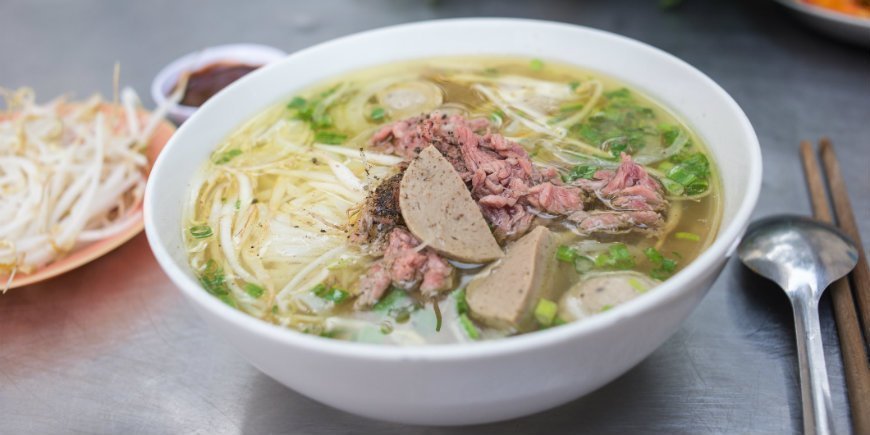
Vietnam has an incredibly varied food culture, which you can experience at markets, restaurants and street kitchens.
You can, for example, taste delicious, traditional Vietnamese food when exploring Ho Chi Minh City’s street kitchens. In the evening, small pop-up restaurants and street kitchens emerge where the locals eat dinner. The next morning, they are gone.
If you want to enjoy a cultural experience and eat your dinner at the pop-up kitchens or restaurants, you should be prepared to eat sitting at small plastic garden furniture. You might like to taste the Vietnamese national dish phở, which is a noodle soup made from beef or chicken stock with spices, vegetables and meat added.
A wonderful supplement to Ho Chi Minh City’s street kitchens is the street food market, Ban Thanh Street Food Market, which supplies delicious – and almost as cheap – food as the Vietnamese street kitchens. At the market, you can buy Vietnamese food from around 20–25 different stalls and sink your teeth into Vietnamese spring rolls, seafood and much more besides. The market is close to bars where you can have a drink and experience some of Ho Chi Minh City’s nightlife.
Vietnam offers countless experiences, and whether you’re into nature, culture or palm-lined beaches, there is definitely something for you!
If you would like to find out more about our holidays in the country, have a look at our website or call our travel consultants, who are on hand to help you.
TourCompass – From tourist to traveller
